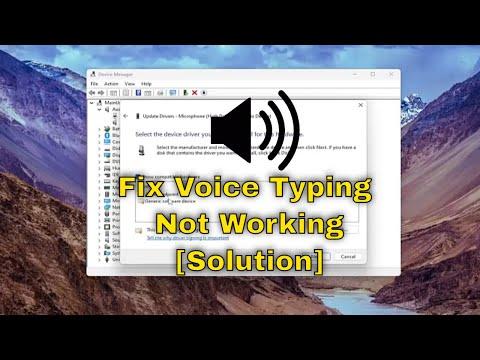I remember the day I first encountered the issue with voice typing in Windows 11 as if it were yesterday. I had been eagerly anticipating the new features of Windows 11, including its enhanced voice typing functionality. As someone who relies heavily on dictation for both work and personal projects, the ability to quickly and accurately transcribe spoken words into text seemed like a game-changer. I had high hopes that this would significantly streamline my workflow, making my tasks more efficient and less time-consuming.
However, things didn’t go as smoothly as I had hoped. One day, I found myself in a situation where voice typing simply refused to work. No matter what I did, the feature wouldn’t respond to my commands. Frustration quickly set in as I realized that this issue was not only disrupting my productivity but also causing unnecessary stress. I decided to tackle the problem head-on and find a solution to get voice typing back up and running.
My first step was to check the basics. I made sure that my microphone was properly connected and functioning. I performed a quick test by recording my voice using a different application to verify that the issue wasn’t with the microphone itself. To my relief, the microphone was working perfectly. This led me to believe that the problem lay specifically with the voice typing feature rather than any hardware issues.
Next, I turned my attention to the Windows settings. I navigated to the ‘Settings’ menu and selected ‘Time & Language’. From there, I went to ‘Speech’. It was important to ensure that speech recognition was enabled and properly configured. I double-checked the settings to confirm that the ‘Speech Recognition’ option was turned on and that my language settings were correctly set to English. Everything seemed to be in order, but the problem persisted.
Determined to dig deeper, I decided to update my Windows 11 system. Sometimes, bugs and glitches can be resolved with the latest updates, and I hoped this might be the case here. I went to ‘Settings’, then ‘Windows Update’, and clicked on ‘Check for updates’. After allowing Windows to search for and install any available updates, I restarted my computer to apply the changes. Unfortunately, despite the update, voice typing was still not functioning.
Realizing that the issue might be more complex, I decided to explore some advanced troubleshooting steps. One common fix for many software-related issues is to reset the associated feature or application. I went to the ‘Settings’ menu again and searched for ‘Voice Typing’. I found an option to reset the feature and proceeded with it. This step involves clearing any cached data or settings that might be causing conflicts, which could potentially resolve the issue.
After resetting the voice typing feature, I tried using it again, but to my dismay, it still didn’t work. At this point, I knew I needed to dive even deeper. I turned to online forums and communities where users discuss similar issues. To my surprise, I found that I wasn’t alone—many others were experiencing the same problem. Some users suggested that specific third-party applications or even certain system settings might interfere with voice typing functionality.
I decided to check for any third-party applications that might be causing a conflict. I reviewed the list of installed programs on my computer and uninstalled any recent additions that could potentially be interfering with voice typing. Additionally, I disabled any non-essential startup programs to see if they might be impacting the feature.
Another tip I came across was to adjust the privacy settings related to microphone access. I navigated to ‘Settings’, then ‘Privacy & Security’, and selected ‘Microphone’. I made sure that all relevant apps, including voice typing, had permission to use the microphone. Sometimes, restrictive privacy settings can prevent features from functioning correctly, so this was an important step to verify.
If none of these steps had worked, I was prepared to consider a more drastic measure: creating a new user profile. Sometimes, user profiles can become corrupted or misconfigured, leading to issues with specific features. By creating a new profile, I could test whether the problem was specific to my existing account. If voice typing worked under the new profile, it would indicate that something was wrong with my original profile settings.
Fortunately, my troubleshooting efforts eventually paid off. After going through these steps methodically, I discovered that the issue was related to a specific system setting that had been inadvertently changed. Once I adjusted this setting, voice typing started working again as expected.
In summary, encountering the problem with voice typing in Windows 11 was a challenging experience, but it was ultimately manageable through systematic troubleshooting. By checking the basics, updating the system, resetting the feature, exploring advanced troubleshooting, and adjusting settings, I was able to resolve the issue and restore the functionality I needed. This experience reinforced the importance of patience and persistence when dealing with technical problems, and it provided valuable insights into the troubleshooting process for future issues.
